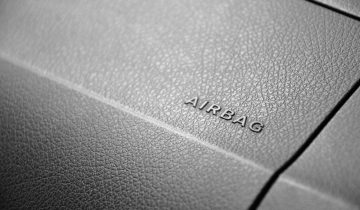It’s common knowledge to know just how important seat belts are in protecting passengers and drivers of vehicles. They prevent countless fatalities every year, with statistics showing that over half of the people killed during a nighttime accident in 2019 were not wearing a seat belt. On average, that extends to over fifteen thousand lives.
So, what exactly enables seat belts to serve their protective purpose?
Most Essential Seat Belt Features
Some certain features and mechanisms are necessary for seat belts to be deemed functional. If any of these components are malfunctioning, it’s crucial to get seat belt repair or replacement.
- Seat belts are supposed to have a deceleration mechanism in their retractors. This allows the strap not just to extend and retract as necessary but to be able to properly secure the wearer depending on the force applied. It should lock up once affixed to the body so that the wearer stays in place.
At the same time, the mechanism needs to be able to respond to sudden movements and shifts in speed to loosen and tighten as necessary. This way, the wearer is protected without causing extra tension that would do its own damage.
- Seat belts should have flex mechanisms in the webbing. The webbing is the band that goes over the shoulder and waist, and it should have enough flexibility that it doesn’t completely restrict movement and cause injury.
The most basic variations use stitch patterns that are meant to give way under a particular load. More advanced models will have a torsion bar.
- The pre-tensioner is an essential feature that ensures the wearer is still in the proper seating position should the belt tighten. This is important for sudden deceleration or stops and keeps the individual in their seat. Using pistons and cables, the belt ensures that the rider stays where they need to be.
The Main Purpose of Seat Belts
There are different types of seat belts with various functions. The most common of which is the two-point seat belt which has the waist and sash. Others include belt-in-seat and multi-point systems that go up to six points (ideal for young children).
We know that they are meant to keep us safe, but what exactly are the objectives of seat belts?
- The most important function of the seat belt is to prevent ejection. Many accidents are survivable until an individual is forcefully thrown out of their vehicle after a collision. This increases their risk of injury and fatal impact.
- Another vital purpose is spreading the force of the crash. When an external force becomes directed to one spot, this causes extreme damage. The belt will spread the impact throughout the body so that no one section takes all of the force. So, this increases the chance of withstanding the damage and lessens the severity of the injury.
- Seat belts are supposed to reduce the velocity of the wearer’s body. This prevents jerk movements that increase the chance of whiplash and other damage.
- One prime purpose of seat belts is also to protect vital organs. With its positioning and movement, crash force is directed to areas away from crucial internal body parts.
Conclusion
The way a seatbelt protects individuals in their vehicles is more complex than often thought about. Because of this, it’s important to ensure that each mechanism is working as intended. Seat belt replacement and repairs are often overlooked because people think it’s easy to make do with a partially working seat belt, but it’s important to pay mind to these functions as they may just save your life.
For any seat belt repairs and replacement needs, make sure to check out Safety Restore. We are the world’s leader in post-accident restorations for seat belts and airbag modules, dedicated to helping you keep your vehicle safe. Contact us today!

